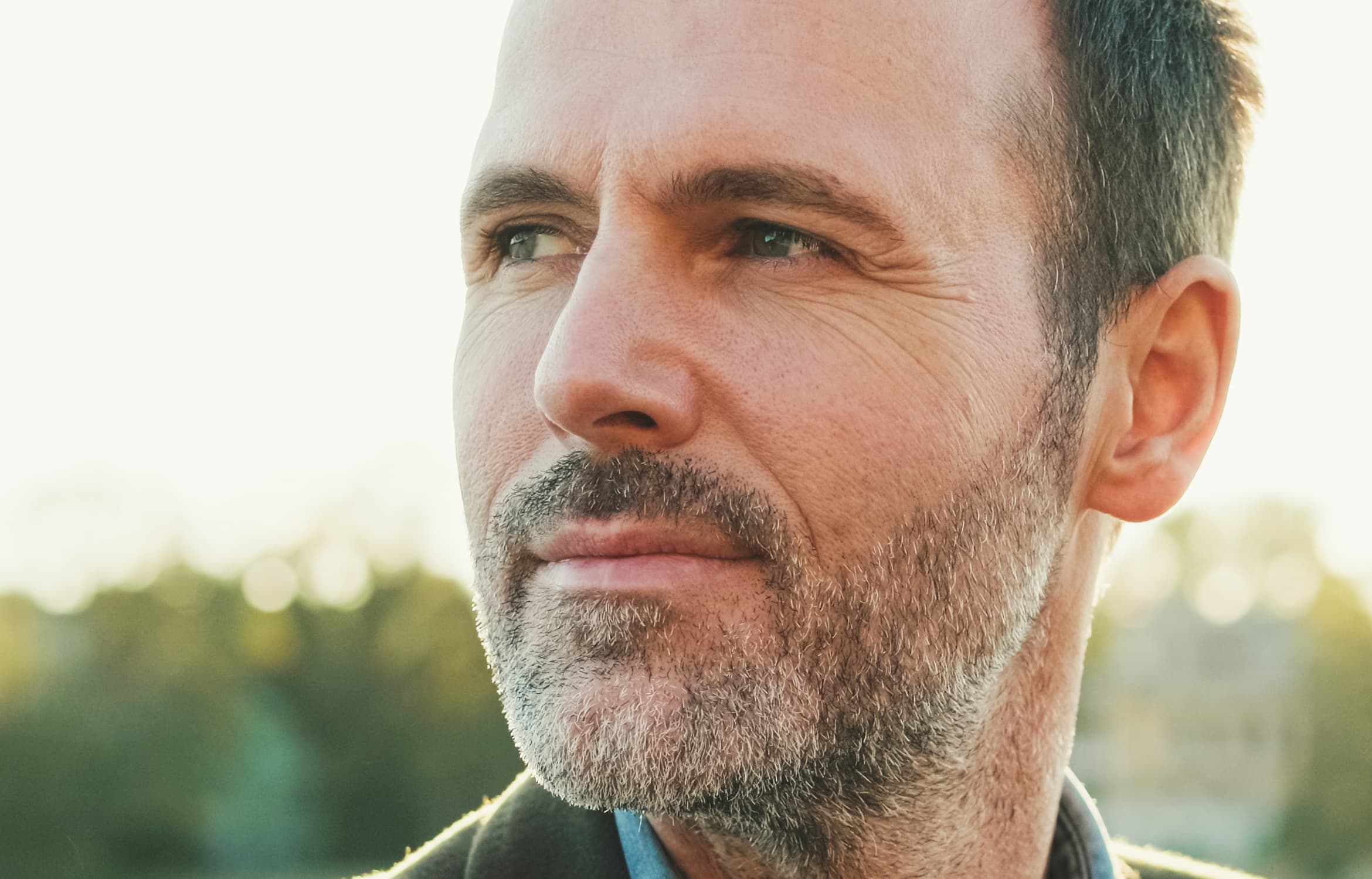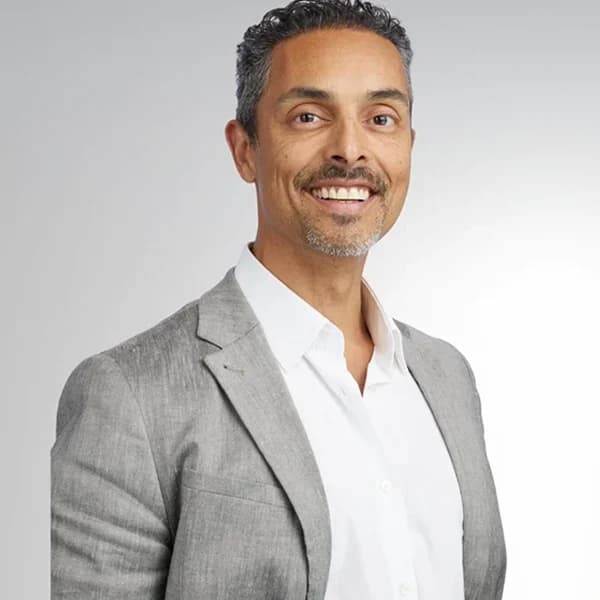
Rhinoplasty in London
Rhinoplasty in London with Dr Julian De Silva offers precise nasal refinement and improved breathing through minimally invasive techniques and rapid recovery methods, performed by a facial-only plastic surgeon with over 20 years’ experience.
What Is Rhinoplasty?
Rhinoplasty, commonly known as a "nose job," is a highly specialised nasal reshaping procedure used to reduce, refine, lift, or straighten the nose and improve breathing while maintaining a natural facial appearance. Small adjustments, often less than a millimetre, can have a visible impact on facial harmony.
In addition to cosmetic and functional rhinoplasty, Dr Julian De Silva also specialises in ethnic rhinoplasty and male rhinoplasty, techniques designed to address specific anatomical features, aesthetic goals, and cultural or gender-specific considerations.

Rhinoplasty at
a Glance
Surgery Time
2-4 Hours
Hospital Stay
Outpatient
Anaesthetic
Twilight Sedation
Time Off Work
2 Weeks
Shower
2 Days
Return To Routine
3-5 Days
Exercise
3 Weeks
Sexual Activity
3 Weeks
Flying
1 Week
Recovery
4-6 Weeks.
Fully at 12 months
Featured In








Be Inspired by Our Rhinoplasty Patient Results
Dr De Silva’s unparalleled surgical skill and artistic eye contribute to his natural Rhinoplasty results. Browse our Before and After gallery of our real-life patients and be inspired by their transformations.








Why Choose Dr De Silva for Rhinoplasty in London?
Widely recognised as one of the leading rhinoplasty surgeons in the UK, Dr Julian De Silva focuses exclusively on facial surgery, a specialisation that has enabled him to master the delicate balance between form, function, and facial harmony. Every contour of the nose is evaluated in relation to the face, where even the smallest change can influence another feature. This precise and comprehensive approach is what sets Dr De Silva apart.
A respected lecturer and author, he is regularly invited to present his innovations in rhinoplasty technique and research at national and international conferences, reflecting his role as a thought leader in facial aesthetics.
"My focus has and always will be to be the very best at what I do to continually innovate and provide world-class care to my patients and my team. My mission is to help every patient become the best version of themselves through expert results, lifelong support, and premium care."
— Dr Julian De Silva
Board Certified, Facial Plastic Surgery Expert
With more than 20 years of experience, Dr De Silva is a board-certified facial plastic surgeon known for achieving natural rhinoplasty results through attentive, patient-focused care. His calm, reassuring manner and ability to listen carefully to each patient’s goals are integral to his success. Every nose is sculpted with millimetric precision to look as though it were always part of the face.
Artistry and Surgical Skill
Nasal reshaping is considered one of the most complex surgical procedures because both aesthetics and function are crucial for a successful outcome. As a facial-only surgeon, Dr De Silva has performed over 1,000 rhinoplasties, combining refined surgical skill with artistic understanding to create balanced, functional, and natural outcomes.
Signature Techniques for Faster Recovery
Over two decades, Dr De Silva has developed his signature rhinoplasty protocols, designed to achieve natural refinement with faster recovery and minimal trauma. His methods include:
- Ultrasonic (Piezo) bone sculpting means less bruising and cleaner contours
- Endoscopic visualisation creates accurate work through smaller incisions
- Tissue glue for incision closure results in quicker healing, minimal suture irritation.
Discreet Care, Comfort, and Safety
All rhinoplasty procedures are performed under twilight sedation at Dr De Silva’s CQC-accredited Harley Street clinic, avoiding the risks of general anaesthesia, hospital infections and lengthy in-patient stays. Patients typically return home within hours, cared for in complete privacy.
Natural, Balanced Results
Guided by the Golden Ratio and principles of proportion, Dr De Silva creates results that enhance each patient’s features rather than alter them, earning his reputation for trusted, natural outcomes among patients worldwide.
Watch Our Patient Video Diaries
Watch real-life patients in their initial stages of life post-rhinoplasty to see what is involved.

Dr De Silva’s Rhinoplasty Method
Dr De Silva performs around 30% of rhinoplasties with septoplasty to improve breathing and structure. Cartilage and bone are sculpted to achieve the desired refinement and grafts taken from your own cartilage may be used to create tip definition.

Dr De Silva will perform your rhinoplasty using either an open or closed method, depending on your condition.
Incisions are made either internally or across the columella (open approach).
Dr De Silva uses Piezo ultrasonic technology, diamond burrs, and 3D telescopes to reshape the nose with exceptional precision and minimal trauma. The diamond burr refines bone smoothly and accurately, while Piezo ultrasound cuts bone with vibration rather than force, preserving soft tissue and reducing swelling and bruising for a smoother recovery.
Tissue glue is used to close incisions, and laser treatments can be combined for rejuvenation of your skin in combination with regenerative medicine (Growth factor technology).
A cast may be applied to protect the nose and hold the bones and cartilage in place.
An Alternative To General Anaesthesia
Dr De Silva avoids the risks and side effects of general anaesthesia by using his patented, ultra-precise twilight sedation system for rhinoplasty. This advanced micro-dosed approach, pioneered by Dr De Silva, provides a safer, more refined, sleep-like experience with dramatically fewer complications and a significantly faster recovery.
Most patients wake within 30 minutes and leave the clinic within an hour, and over 20% of those who previously had general anaesthesia report strongly preferring twilight sedation. This technique is one of the key reasons patients travel globally to undergo treatment with Dr De Silva.

What to Expect: Before, During and After Surgery
All of Dr De Silva’s cases of rhinoplasty in London are performed in his CQC-accredited Harley Street Clinic under twilight sedation on an outpatient basis. Surgery can last between 2-4 hours, depending on the complexity and techniques required.
Initial Consultation
Dr De Silva will review your medical and surgical history, a nasal and facial examination (including internal assessment), and 3D imaging when applicable to show potential outcomes. Your expectations, the limitations of the procedure, and the recovery process will also be discussed. A second consultation is typically scheduled before surgery to confirm the plan and review pre-operative instructions.
Day of Surgery
You’ll arrive at Dr De Silva’s Harley Street clinic a few hours before the procedure. Our team will review your medical details and ensure your comfort. Dr De Silva will then go over the surgical plan with you and your accompanying guest, who can wait in our private lounge. After surgery, you will rest in recovery under supervision, and thanks to twilight sedation, most patients wake comfortably and can return home within about an hour, with aftercare instructions and 24-hour support from our clinical team.
Follow-up Appointment
You’ll receive detailed post-operative guidance and 24-hour access to the clinical team for reassurance during the early recovery period. A video call is scheduled the day after surgery for Dr De Silva to monitor your recovery, followed by an in-person follow-up 4-5 days later to remove stitches and monitor your healing progress.
Read Our Surgery Reviews

What Types of Rhinoplasty Does
Dr De Silva Offer?
Depending on your symptoms and concerns, Dr De Silva will choose the best approach for you to ensure you get the results you desire. His Harley Street rhinoplasty surgery procedures include:
Traditional Rhinoplasty
Traditional rhinoplasty focuses on reshaping the bone, soft tissues and cartilage to improve both the nose’s function and appearance, offering a more refined profile. Where possible, De Silva uses advanced ultrasonic technology and diamond burrs to precisely reshape the nose with minimal bruising and faster recovery.
Revision Rhinoplasty
Revision rhinoplasty is used to correct or improve previous rhinoplasty results. It can correct complications and improve outcomes. It is more complex and often performed after healing from a previous procedure, generally 12 months later.
Ethnic Rhinoplasty
Ethnic rhinoplasty aims to preserve identity-defining facial characteristics while enhancing nasal appearance, providing a personalised approach for different ethnic backgrounds.
Male Rhinoplasty
Male rhinoplasty is designed to address the unique anatomical structure of male noses, providing a strong, masculine appearance that complements the rest of the face.
Teenage Rhinoplasty
Teenage rhinoplasty is performed on young people whose facial features might still be developing, but the nose has finished growing. It aims to enhance their nasal shape while considering growth and long-term results.
Preservation Rhinoplasty
Preservation rhinoplasty focuses on preserving the natural nasal framework, gently refining the nose without removing excessive tissue, ensuring a more natural, long-lasting result.
Septoplasty
Septoplasty straightens a deviated nasal septum, the wall of cartilage and bone between the nostrils, to improve airflow, relieve obstruction, and enhance nasal symmetry.
Submucosal Resection
Submucosal Resection removes excess cartilage or bone beneath the nasal lining to clear airway blockages and enhance breathing.
How Dr De Silva Treats Nasal Conditions
Dr Julian De Silva’s series of rhinoplasty animation videos shows how different nose types can be improved with surgery. Patients choose rhinoplasty for both aesthetic and functional reasons. Below are the most common improvements Dr De Silva performs:
Reducing a Nasal Hump

Excess bone and cartilage along the bridge are carefully reduced while maintaining nasal structure. Controlled osteotomies narrow the nasal bones and restore a natural contour.

What Makes A Good Candidate?
Ideal candidates are in good health, have realistic expectations, and wish to improve nasal appearance or function while maintaining natural harmony.
Dr De Silva will assess your personal case during a private consultation to determine your suitability. During this consultation, he may perform a physical examination or request tests in order to align the correct treatment with your aesthetic goals.
What Is Rhinoplasty Recovery Like?
Dr De Silva’s rhinoplasty techniques minimise tissue trauma and support rapid recovery. He uses ultrasonic (Piezo) instruments, fine incisions, and regenerative medicine to reduce swelling and bruising.
Recovery after rhinoplasty is usually straightforward, with most patients returning to work and social life within one to two weeks. In the first few days following surgery, it’s important to support optimal healing by:
- Keeping your head elevated when sleeping
- Avoiding blowing your nose
- Refraining from heavy lifting or exercise.
You may experience some swelling, which can affect your breathing and you can use an ice pack for short intervals to help alleviate discomfort.
Patients benefit from Dr De Silva’s comprehensive aftercare, including arnica-based supplements, taping guidance, and targeted anti-swelling medication applied one week post-surgery. Where appropriate, Dr De Silva will treat patients with oxygen therapy, advanced medications, lymphatic drainage, and regenerative treatments to promote faster, smoother healing.
A Typical Timeline
Every recovery is individual, but with Dr De Silva’s advanced methods and detailed guidance, healing is faster, more comfortable, and delivers natural, lasting results. For a detailed recovery guide, see our Rhinoplasty Recovery Blog.
Rest with head elevated; mild swelling, no heavy activity.
Cast and stitches removed; most swelling down, make-up permitted.
Fit to drive, work, and attend social events.
Gentle exercise; short-haul flights usually fine.
90% of swelling resolved, breathing and smell normalised.
Final contour and skin texture settle.

Are There Risks Involved in Nasal Surgery?
In Dr De Silva’s hands, complications are uncommon. Procedures are performed in a purpose-built, infection-controlled environment, reducing the risk of hospital-acquired complications.
Possible risks include:
- Numbness around the nasal tip
- Small visible scar in open cases
- Septal perforation (very rare)
- Need for revision (small minority of patients)
All surgical procedures carry risks. Individual outcomes vary. A full assessment and consultation are required before any treatment.
Can Rhinoplasty Be Combined with Other Techniques?
Dr De Silva frequently combines rhinoplasty with other facial procedures to give a natural-looking result and avoid the use of scars associated with conventional techniques:

Upper Third of the Face:
- Blepharoplasty
- Brow & Forehead Lift
- Anti-wrinkle treatments for fine lines

Middle Third of the Face:
- Volume augmentation of the cheeks
- Fat-transfer to the mid-face & cheeks
- Skin resurfacing for lines & deep wrinkles
- Anti-wrinkle injections for fine lines

Lower Third of the Face:
Interested in Rhinoplasty in London? Get In Touch
Trust your face to one of the best surgeons for rhinoplasty in England. If you are thinking about enhancing your facial features with nose surgery, Dr De Silva’s comprehensive knowledge and extensive expertise make him your top choice.

Dr. Julian De Silva is a renowned facial cosmetic surgeon at Harley Street, London, specializing in facelift, blepharoplasty, and rhinoplasty. Known for natural-looking results, he has treated top celebrities and uses advanced technology for fast recovery. Dr. De Silva is also a recognized author and educator in aesthetic surgery.



